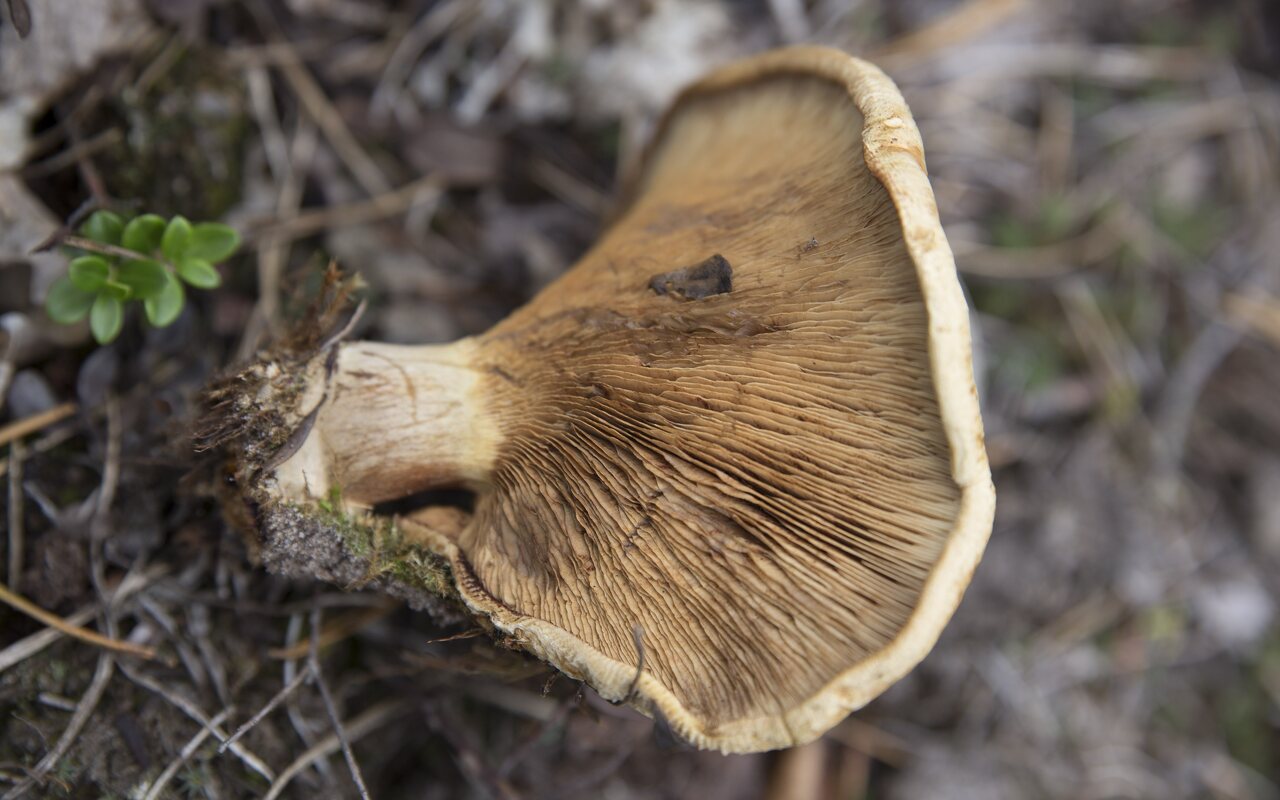
Paxillus involutus · pilkoji meškutė
- brown roll-rim, common roll-rim
- Kahle Krempling, Verkahlende
- pilkoji meškutė
- kailā mietene
- krowiak podwinięty
It is widely distributed across the Northern Hemisphere and has been inadvertently introduced to Australia, New Zealand, South Africa, and South America, probably transported in soil with European trees.
Previously considered edible and eaten widely in Eastern and Central Europe, it has since been found to be dangerously poisonous. It had been found to cause potentially fatal autoimmune hemolysis, even in those who had consumed the mushroom for years without any other ill effects. An antigen in the mushroom triggers the immune system to attack red blood cells. Serious and commonly fatal complications include acute kidney injury, shock, acute respiratory failure, and disseminated intravascular coagulation. Paxillus involutus also contains agents which appear to damage chromosomes.
There is no antidote for poisoning, only supportive treatment consisting of monitoring complete blood count, renal function, blood pressure, and fluid and electrolyte balance and correcting abnormalities. The use of corticosteroids may be a useful adjunct in treatment, as they protect blood cells against hemolysis, thereby reducing complications. Plasmapheresis reduces the circulating immune complexes in the blood which cause the hemolysis, and may be beneficial in improving the outcome. Additionally, hemodialysis can be used for patients with compromised kidney function or kidney failure.
Yra užsispyrusių grybautojų, kurie ir toliau valgo šiuos nuodingus grybus naudodami geležinius argumentus: "seneliai valgė, tėvai valgė ir aš valgau".
‥